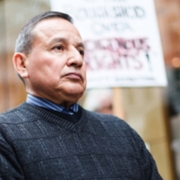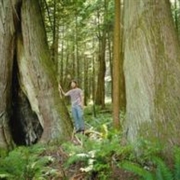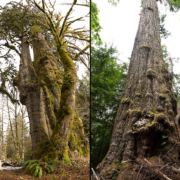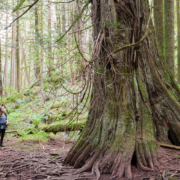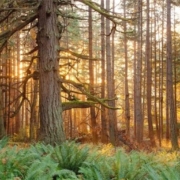Eco-groups regard new forest tenure legislation as ‘land grab’
The B.C. government is being accused of giving forest companies new, sweeping powers over the land base through legislation it introduced last week to amend the Forest Act.
“This appears to be essentially a giveaway to big companies,” said Jessica Clogg, a lawyer with West Coast Environmental Law who specializes in forestry issues. She was referring to a tenure rollover plan given first reading last week that would give forest companies the ability to convert their volume-based forest tenures to area-based tenures called tree farm licences.
West Coast Environmental Law is one of numerous environmental groups opposing the legislation, which they see as generally extending corporate rights at a time when more diverse issues, from First Nations to community interests and biodiversity, are also on the public agenda.
“We have seen a lot of consolidation in the industry and this is setting us up for that last grab by those that are left standing to lock down their rights,” she said Thursday. “I see a clash of the titans over the B.C. land base.”
The legislation was introduced through Bill 8, the Miscellaneous Statutes Amendment Act, on Feb. 20. Forests, Lands and Natural Resource Operations Minister Steve Thomson called it a “milestone” that will help the B.C. Interior weather the effects of the mountain pine beetle infestation. The government expects forest companies to make more investments on the land if they have more private property-like rights.
The forest industry is supportive of the changes, which it expects will encourage private investment on the land. But the changes will not erode existing environmental protections or other non-timber values, said Doug Routledge, vice-president of the Council of Forest Industries. He said it makes sense to manage diverse values, as well as timber, on an area-based model.
Most Interior forest lands are managed on a volume-based tenure system through forest licences. Licensees have allowable annual cuts that allocate timber within a provincial supply area. The initiative to create area-based tenures — where the area containing the timber supply allocated to the company is licensed — was driven largely by last year’s explosion and fire at the Burns Lake sawmill, which precipitated a regional economic crisis when the mill owner claimed there was not enough timber in the timber supply area available to the company to justify building a new mill.
Routledge said it makes sense to introduce the legislation now, which is enabling legislation only, as it will enable whoever forms the next government to move forward with it.
However, NDP forests critic Norm Macdonald, referred to the changes as an amendment “that is best left to fall off the table.”
“This is coming just before an election from a government that has clearly lost the public trust,” he said.
The province announced it intended to proceed with establishing area-based tenures when it released its Mid-term Timber Supply Action Plan last October. That plan was based on recommendations from a special committee on the timber supply that toured the province last summer. Area-based tenures were raised during the hearings, said Macdonald, who sat on the committee, but what members heard from the public, he said, was to proceed slowly and with caution.
He said the NDP is not opposed to the creation of more tree-farm licences; the model has been in place on the Coast for decades. It’s the way the government is going about it, by introducing legislation that does not spell out the specifics on how it will proceed, that the party opposes.
“This is legislation specifically to create tree-farm licences held by private industry. What we heard in the committee is that it should be part of the conversation. But we should be extremely careful.”
Routledge said he expects the industry to move cautiously. First, he said, the process is controlled by the government. Tree farm licences will be considered at the minister’s invitation only. He said he does not expect a flood of applications when those invitations are extended.
“This is simply a different form of tenure that grants harvesting rights over a certain volume of timber. It is not a giveaway of timber. The timber has already been allocated in tenure. It is not a giveaway of land because the land remains vested in the Crown and the public interest. It is not different than a forest licence except that it is spacially explicit. The same rights and responsibilities apply.”



